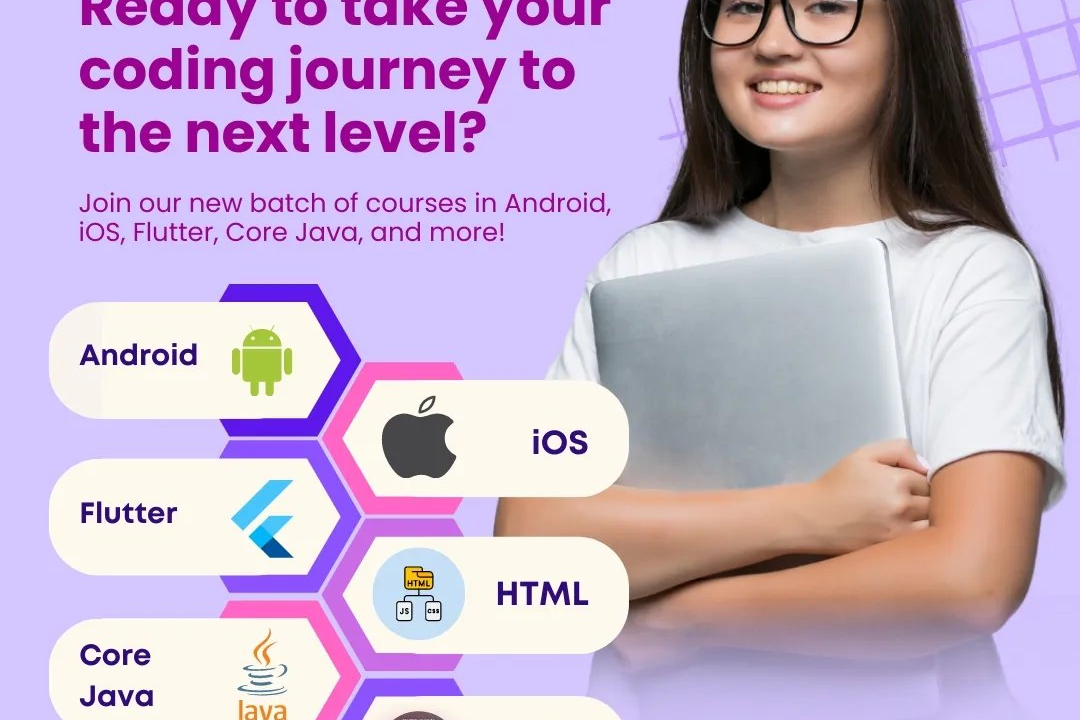What Are The Steps To Learn Flutter
Learning Flutter involves a series of essential steps that can set you on the path to developing stu
What Are The Steps To Learn Flutter
Learning Flutter is a strategic choice for aspiring app developers, as it enables the creation of high-performance, cross-platform applications from a single codebase. To get started, familiarize yourself with Dart, the language used in Flutter. Next, delve into Flutter's official documentation and online tutorials to understand its core concepts and widgets. Engaging in hands-on projects will reinforce your skills and provide practical experience. Additionally, exploring state management solutions and participating in the Flutter community can further enhance your learning. This structured approach not only equips you with the necessary tools to build visually appealing apps but also positions you favorably in the job market as demand for Flutter developers continues to rise.
To Download Our Brochure: https://www.justacademy.co/download-brochure-for-free
Message us for more information: +91 9987184296
Learning Flutter is a strategic choice for aspiring app developers, as it enables the creation of high performance, cross platform applications from a single codebase. To get started, familiarize yourself with Dart, the language used in Flutter. Next, delve into Flutter's official documentation and online tutorials to understand its core concepts and widgets. Engaging in hands on projects will reinforce your skills and provide practical experience. Additionally, exploring state management solutions and participating in the Flutter community can further enhance your learning. This structured approach not only equips you with the necessary tools to build visually appealing apps but also positions you favorably in the job market as demand for Flutter developers continues to rise.
Course Overview
The “What Are the Steps to Learn Flutter” course provides a comprehensive roadmap for beginners eager to master Flutter for app development. This course covers essential topics, starting with an introduction to Dart programming language, followed by an exploration of Flutter's core concepts, including widgets, layouts, and navigation. Students will engage in hands-on projects to apply theoretical knowledge, fostering practical experience in building user interfaces. Furthermore, the course emphasizes effective state management techniques and best practices for optimizing app performance. By the end of the course, participants will possess a solid foundation in Flutter, enabling them to confidently create cross-platform applications and pursue advanced opportunities in mobile app development.
Course Description
The “What Are the Steps to Learn Flutter” course offers a structured and engaging pathway for individuals interested in mastering Flutter for mobile app development. Starting with the basics of the Dart programming language, the course guides learners through essential concepts of Flutter, including widgets, layout design, and interactive navigation. Participants will undertake hands-on projects that reinforce their learning and provide real-world experience in creating visually appealing and functional applications. In addition, the curriculum covers critical topics such as state management, app architecture, and optimization techniques to enhance app performance. By the end of this course, students will be equipped with the skills and confidence to develop cross-platform applications, making them well-prepared for a career in mobile development.
Key Features
1 - Comprehensive Tool Coverage: Provides hands-on training with a range of industry-standard testing tools, including Selenium, JIRA, LoadRunner, and TestRail.
2) Practical Exercises: Features real-world exercises and case studies to apply tools in various testing scenarios.
3) Interactive Learning: Includes interactive sessions with industry experts for personalized feedback and guidance.
4) Detailed Tutorials: Offers extensive tutorials and documentation on tool functionalities and best practices.
5) Advanced Techniques: Covers both fundamental and advanced techniques for using testing tools effectively.
6) Data Visualization: Integrates tools for visualizing test metrics and results, enhancing data interpretation and decision-making.
7) Tool Integration: Teaches how to integrate testing tools into the software development lifecycle for streamlined workflows.
8) Project-Based Learning: Focuses on project-based learning to build practical skills and create a portfolio of completed tasks.
9) Career Support: Provides resources and support for applying learned skills to real-world job scenarios, including resume building and interview preparation.
10) Up-to-Date Content: Ensures that course materials reflect the latest industry standards and tool updates.
Benefits of taking our course
Functional Tools
1 - Flutter SDK: The foundational tool for any Flutter developer, the Flutter Software Development Kit (SDK) includes a collection of tools for developing, building, and deploying applications. The SDK allows developers to create high performance applications for both iOS and Android from a single codebase. In this course, students will learn to install and configure the Flutter SDK, setting up their development environment to start building apps efficiently.
2) Dart Programming Language: Flutter uses Dart as its primary programming language. This object oriented language is crucial for writing Flutter apps and allows developers to create efficient, scalable applications. The course will delve into Dart's syntax, structure, and features, ensuring students grasp the concepts needed to write effective code for their applications. Comprehensive modules on Dart cover variables, functions, and error handling, building a strong programming foundation.
3) Visual Studio Code (VS Code): As a lightweight and powerful code editor, Visual Studio Code is a popular choice for Flutter development due to its extensive plugin ecosystem and built in Git support. Throughout the training program, students will utilize VS Code to write, debug, and run their Flutter applications. The course will cover essential extensions and features that enhance productivity, such as code snippets, debugging tools, and integrated terminal access.
4) Android Studio: This integrated development environment (IDE) is feature rich and tailored for Android app development, making it a valuable tool for Flutter developers as well. The course includes practical sessions on using Android Studio for Flutter projects, including setting up emulators, managing project dependencies, and performing testing. Students will learn how to leverage Android Studio's capabilities to streamline their app development process.
5) Flutter DevTools: A suite of performance and profiling tools for Flutter applications, Flutter DevTools is vital for tracking app performance and diagnosing issues. The course will guide students on how to use DevTools effectively, including inspecting the widget tree, analyzing performance metrics, and debugging layout issues. Understanding these tools helps developers optimize their applications for better user experience and performance.
6) Git and Version Control: Version control is essential for managing code changes and collaborating with others. The training program will introduce students to Git, a widely used version control system, teaching them how to create repositories, manage branches, and coordinate with team members on projects. Mastering Git allows students to work efficiently in collaborative development environments, enhancing their overall workflow.
7) State Management: Understanding state management is crucial for effective Flutter app development. This course will cover various state management techniques such as Provider, Riverpod, BLoC (Business Logic Component), and Redux. Students will learn the importance of managing state effectively to maintain consistent and predictable behavior in their applications, especially for dynamic and interactive user experiences.
8) UI Design Principles: Aesthetic design can significantly impact user engagement. This section of the course will focus on UI design principles, including layout, color theory, typography, and responsive design. Students will learn how to create visually appealing user interfaces using Flutter’s rich set of widgets and design components, ensuring their apps not only function well but also look professional and user friendly.
9) Networking and APIs: Most modern applications interact with web services and APIs to fetch or send data. The course will teach students how to implement networking in Flutter using packages like http and Dio. They will explore how to make API calls, handle responses, and parse JSON data efficiently. Practical projects will be incorporated to solidify these concepts through hands on experience.
10) Database Integration: Effective data management is pivotal in app development. This course module covers integration with local databases using SQLite and cloud databases like Firebase Firestore. Students will learn how to perform CRUD (Create, Read, Update, Delete) operations and manage data persistence within their applications. Real world project scenarios will provide insight into connecting apps to databases effectively.
11 - Testing and Debugging: Ensuring the reliability of applications is a key focus in software development. This portion of the course will emphasize writing unit, widget, and integration tests using Flutter’s testing framework. Students will gain skills in debugging and troubleshooting common issues, preparing them to deliver high quality, resilient applications.
12) Deployment and App Store Submission: After developing an application, deploying it to the app stores is the final step. This section will guide students through the process of preparing their apps for release, including configuring app store settings, generating app binaries, and adhering to app store guidelines. Understanding these steps ensures students can successfully launch their applications on platforms like Google Play Store and Apple App Store.
13) Building Real Time Projects: One of the key features of this course is hands on project work. Students will be tasked with building real time applications that incorporate all the skills learned throughout the course—ranging from a simple To Do app to a comprehensive e commerce platform. This practical approach helps solidify their learning and prepares them for real world development challenges.
14) Community and Resources: Engaging with the development community and utilizing available resources is crucial for ongoing learning. This module will introduce students to Flutter community forums, official documentation, and open source projects. They will learn how to participate in the community, ask for help, and contribute to projects, creating a support network that enhances their development journey.
15) Career Advancement and Portfolio Development: The course will emphasize the importance of creating a professional portfolio showcasing their projects. Students will receive guidance on how to effectively present their work, prepare for interviews, and communicate their skills to prospective employers. This focus on career advancement ensures that students are ready to enter the job market with confidence.
Browse our course links : https://www.justacademy.co/all-courses
To Join our FREE DEMO Session:
This information is sourced from JustAcademy
Contact Info:
Roshan Chaturvedi
Message us on Whatsapp: +91 9987184296
Email id: info@justacademy.co












